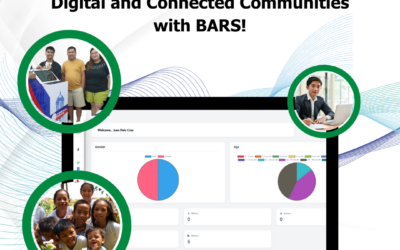Barangay Financial Management Made Easier with BARS Philippines
In every corner of the Philippines, barangays act as the backbone of local governance and community building. With the ever-increasing need for efficient governance, the spotlight is now on the effectiveness of barangay financial management. Proper financial management isn’t just about keeping neat spreadsheets; it’s about driving the community towards growth and development. So, let’s dive into how BARS Philippines—Barangay Automated Records Solution—can revolutionize barangay operations.
Understanding BARS Philippines
First things first, what exactly is BARS? Barangay Automated Records Solution (BARS) is a comprehensive tool designed to streamline and simplify the everyday operations of barangays across the Philippines. Essentially, BARS is like having your super-organized personal assistant who ensures everything is running smoothly without any hiccups. From filing to budgeting, BARS takes the complexities of managing barangay activities and transforms them into automated, efficient processes.
The Importance of Barangay Budgeting
Barangay budgeting is the cornerstone of financial management at the local level. Think of it as the financial blueprint that outlines how resources will be allocated to serve the community effectively. Proper budgeting is key to ensuring that every peso is accounted for and directed towards meaningful projects that uplift and sustain the community’s quality of life.
Components of a Barangay Budget
A well-structured barangay budget typically covers several primary components. First, there are operational expenses—these keep the day-to-day activities in motion. Next, we have development programs that focus on community growth and improvement initiatives. Lastly, there’s the critical element of emergency funds which serves as a financial cushion in case of unexpected events or natural disasters.
Challenges in Barangay Financial Management
Managing finances at the barangay level may seem straightforward, but it comes with its own set of hurdles. Common challenges include inadequate record-keeping, insufficient financial transparency, and sometimes, mismanagement. Such issues not only hinder community development but can also lead to a loss of trust among constituents.
Barangay Income Sources
Where does the money come from? Barangays primarily source their income from local taxes and fees, government allocations, and occasionally from fundraising activities and donations. Each of these streams plays a crucial role in maintaining the financial health of a barangay.
Benefits of Automating Barangay Records
BARS, with its automation abilities, shifts the paradigm by replacing cumbersome manual records with streamlined digital processes. Imagine the ease of generating instant reports, simplifying audits, and most importantly, ensuring transparency and accountability. That’s the power of automation.
How BARS Enhances Financial Management
The features embedded within BARS are nothing short of game-changing. From its user-friendly interface to its robust financial tracking capabilities, BARS stands out as a readily accessible tool that even those apprehensive about technology can learn swiftly.
Case Studies: Success Stories with BARS*
Imagine a barangay where record-keeping errors are a thing of the past. Such is the case with several barangays already utilizing BARS. They report smoother operations and increased engagement within the community, thanks to more transparent processes. Local officials can’t help but sing praises for how it streamlined their governance.
Implementing BARS in Your Barangay
Thinking about adopting BARS? The transition is more straightforward than you might think! BARS Philippines offers structured steps for implementation, along with comprehensive training and ongoing support. The local officials vouch for its simplicity and effectiveness, making it a no-brainer for others to follow suit.
Overcoming Resistance to Automation
Change is never easy, especially when introducing new technology. However, by addressing common concerns and demonstrating the undeniable benefits of automation, resistance can be transformed into enthusiastic adoption. Strong leadership plays a crucial role in guiding communities through this transition.
Future of Barangay Financial Management
Looking forward, technological innovations like data analytics and artificial intelligence promise to further enhance financial management capabilities. Imagine a future where every financial decision is backed by comprehensive data insights—a futuristic yet plausible reality with BARS.
Conclusion
To wrap it all up, there’s no denying that efficient financial management is imperative for community development. By embracing tools like BARS, barangays can chart a path toward a more prosperous and transparent future. If you’re part of a barangay, now is the time to seize the opportunity and get onboard with BARS for the growth and betterment of your community.
FAQs
1. What is the primary purpose of barangay budgeting?
Barangay budgeting aims to allocate resources effectively to support operations, development, and emergency needs of the community.
2. How does BARS ensure data security?
BARS employs advanced encryption protocols and regular system audits to protect sensitive financial data from unauthorized access.
3. Can smaller barangays afford to implement BARS?
Yes, BARS offers scalable solutions tailored to the budgetary constraints of smaller barangays, ensuring affordability and inclusivity.
4. How does automated record-keeping prevent financial discrepancies?
Automation reduces human error, ensures accurate data entry, and provides real-time financial tracking, aiding in the prevention of discrepancies.
5. What training does BARS offer to barangay officials?
BARS provides comprehensive training sessions that cover everything from basic operation to advanced financial management strategies, ensuring all users are proficient.




0 Comments